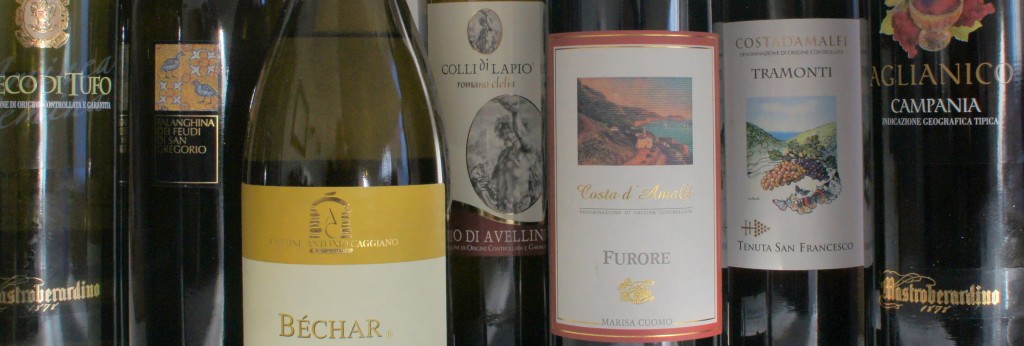 WINE HAS ITS chattering classes too, and for some time now its pet subject has been something called terroir. Like entrepreneur or mise en place, terroir is a French loanword that requires a whole English sentence to convey the meaning. Narrowly construed, it’s the natural conditions prevailing in a particular spot that distinguish the wine of that place. Terroir has been called the “whereness’’ of wine. It might be more correct to say that terroir, when it occurs, is just a place ventriloquizing a grape.
WINE HAS ITS chattering classes too, and for some time now its pet subject has been something called terroir. Like entrepreneur or mise en place, terroir is a French loanword that requires a whole English sentence to convey the meaning. Narrowly construed, it’s the natural conditions prevailing in a particular spot that distinguish the wine of that place. Terroir has been called the “whereness’’ of wine. It might be more correct to say that terroir, when it occurs, is just a place ventriloquizing a grape.
Winemakers want to claim terroir for their properties. But in the great majority of cases, they’re just blowing smoke since authentic terroir isn’t all that common. To put the problem in human terms, while we all have character, few of us are characters. This, in part, is why a recent tasting of wines from Italy’s Campania region proved so startling – and rewarding. It seems that here terroir isn’t some marketing wheeze, it’s a gust of wind that blows your hat clear off and leaves you wondering, bareheaded, what just happened.
In the 1930s ampelographers counted 400 distinct varietals; more than 40 are still cultivated here.
The main vineyard area of Campania extends roughly from the cliffs of the Amalfi Coast on the Tyrrhenian Sea south of Naples north and east into the lower slopes of the Apennine mountain range. Two extinct volcanoes and one active (Vesuvius) are located either within or right at the region’s edge, and the soils here reflect their stormy histories.
The sheer variety of vines either native to or long-resident in Campania is striking. In the 1930s ampelographers (experts in the natural history of the vine) counted 400 distinct varietals; more than 40 are still cultivated here. The combination of volcanic soils and quirky vines of ancient provenance would be enough to ensure that Campania’s claim to terroir is no vain boast. Add to this, vineyards that are set at strikingly high elevations (some above 2,000 feet), and what you have is terroir in spades.
Your point of entry into the mysteries of high-fidelity Campanian wine should be whites from the higher elevations along either side of a line running, roughly, north from Avellino to Benevento. The primary grapes involved, fiano and greco, are often seen on their own, while falanghina, coda di volpe, verdeca, and biancolella varieties are more typically encountered in blends. You may note the primary fruit component receding behind assertive notes of green herbs, pine, and minerals – as if the main ingredient of a dish were being upstaged by its garnishes. Light, fresh, and strikingly dry, these wines defy easy description. They just don’t taste like anything else.
Regional reds are anchored by the formidably tannic aglianico grape, which appears to do best in volcanic soils that mitigate its fiercer qualities. But don’t mistake its naturally powerful build with some pumped-up New World fatso. There’s more taut muscle and sinew than sheer mass – and alcohol levels that are positively girlie by Napa standards. Piedirosso plays a supporting role as a blending varietal for red wines, as does tintore di Tramonti – a truly rare bird – and primitivo.
Charismatic or enigmatic? It’s your call. Just don’t ask me to help you find your hat. I’m still looking for my own.
Mastroberadino Greco di Tufo 2009 High-toned lime, stone, and pine forest notes; some fine length to it and a bit of a softer, cushier impression. Around $25.
Feudi di San Gregorio Sannio Falanghina 2010 Lively lime and stone aromas. Super clean and fresh, with some intriguing nutty aspects and an emphatically mineral finish. Around $20.
Cantina Antonio Caggiano “Bechar’’ Fiano di Avellino 2009 Some elegantly integrated lemon-drop fruit, mineral notes, and brisk acidity. Creamy, lightly chewy texture. This is modernist fiano. Around $25.
Collio di Lapio Fiano di Avellino 2009 High-toned, persistent lime and melon fruit; minerally but with a beautiful sweetness at the core. Seems to grow bigger and more richly textured in the glass. Just lovely stuff. Around $28.
Marisa Cuomo Costa d’Amalfi “Furore’’ Rosso 2010 Mossy, green herb aromas; solid core of black fruit is garnished with herbal and forest notes. A 50/50 aglianico-piedirosso blend that nicely illustrates the results achievable with this traditional pairing. Around $25.
Tenuta San Francesco Costa d’Amalfi Tramonti Rosso 2009 Blend of aglianico, piedirosso, and tintore di Tramonti from 100-year-old ungrafted vines. Attractive aromatics dominated by woodsy spruce and cedar notes. Rather dry on the palate, sturdy fruit, real acid structure, and some fine, grippy tannins. Around $22.
Mastroberadino IGT Campania Aglianico 2009 Big mouthful of wine here, packed solidly with firm, dense, rather grippy black fruit, a stiff dose of minerality, and some lightly raspy tannin. Fruit sweetness emerges with a bit of time. Needs a little patience. Around $25.
Reach me at stephenmeuse@icloud.com
Follow @stephen_meuse